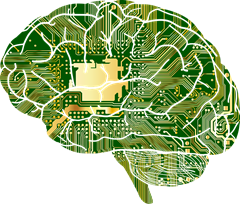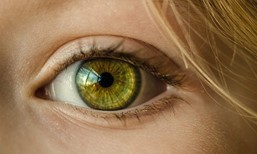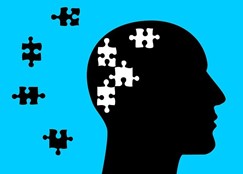
 It releases symptoms that are buried within the unconscious body-brain (reflexive core), not accessible through the conscious mind. It can actually reduce and even eliminate pain in the physical body, likely due to the release in systems of the body that are stuck in survival mode. Brainspotting is currently the quickest therapy technique for overcoming and healing from trauma.
It releases symptoms that are buried within the unconscious body-brain (reflexive core), not accessible through the conscious mind. It can actually reduce and even eliminate pain in the physical body, likely due to the release in systems of the body that are stuck in survival mode. Brainspotting is currently the quickest therapy technique for overcoming and healing from trauma.
It was created by Dr. David Grand during his time working with survivors struggling with trauma after 9/11. Dr. David Grand states “Brainspotting is a powerful, focused treatment method that works by identifying, processing and releasing core neurophysiological sources of emotional/body pain, trauma, dissociation and a variety of other challenging symptoms.
 Trauma occurs when a person is unable to cope with an experience or an event, and it stays with them unconsciously or even consciously. Any life event which causes significant physical and/or emotional injury and distress, in which the person powerfully experiences being overwhelmed, helpless, or trapped, can become a traumatic experience (Brainspotting, 2017). Physical injury, chronic pain, difficult medical interventions, abuse, environmental disasters, sudden loss of a family member, witnessing mass violence, etc., can all cause trauma. Most people suffer from some sort of trauma in their lifetimes, but an accumulation of trauma can harm one’s health creating problems functioning.
Trauma occurs when a person is unable to cope with an experience or an event, and it stays with them unconsciously or even consciously. Any life event which causes significant physical and/or emotional injury and distress, in which the person powerfully experiences being overwhelmed, helpless, or trapped, can become a traumatic experience (Brainspotting, 2017). Physical injury, chronic pain, difficult medical interventions, abuse, environmental disasters, sudden loss of a family member, witnessing mass violence, etc., can all cause trauma. Most people suffer from some sort of trauma in their lifetimes, but an accumulation of trauma can harm one’s health creating problems functioning.
A traumatic experience can cause feelings of being lost, emotionally numb, and unsafe. A person may have excessive thoughts, feelings and behaviors, or attachment issues, difficulty sleeping, an eating disorder, PTSD, anxiety, or depression.
Brainspotting has also been shown to help with stress, low motivation, difficulty concentrating, and anger which all may be caused by a trauma. It has also had positive results for problems including ADHD, phobias, substance abuse, anxiety, and impulse control issues.
The medical and psychological literature now acknowledges that approximately 75% of requests for medical care are linked to the actions or consequences of this accumulation of stress and/or trauma upon the systems of the human body (Brainspotting, 2017).
Brainspotting can also be used in conjunction with other body-based therapies to help a person heal.
Over the years, research has shown that trauma has a way of storing itself away in the body where it has an effect on our memories, emotions, and even our physical health (Thrive Counseling, 2020). Brainspotting gives the body the ability to self-heal. The brain is rewired to process negative feelings and emotions in a more positive way.
 Scientific findings have shown the subconscious is responsible for around 95% of the brain’s activity. These include habits and patterns, automatic body function, creativity, emotions, personality, beliefs and values, cognitive biases, and long-term memory (Stones, 2018). Regular psychological therapy deals more with the conscious so it takes a much longer time to heal from trauma.
Scientific findings have shown the subconscious is responsible for around 95% of the brain’s activity. These include habits and patterns, automatic body function, creativity, emotions, personality, beliefs and values, cognitive biases, and long-term memory (Stones, 2018). Regular psychological therapy deals more with the conscious so it takes a much longer time to heal from trauma.
When people fixate their eyes in a certain direction it affects how they feel. Certain eye positions (brainspots) trigger a traumatic memory or painful, negative emotion, which then is released with the brainspotting. A brainspot can actually be connected to a limiting belief that exists at a deeper (unconscious) level that is creating issues such as a lack of confidence, procrastination, low motivation, concentration problems, social anxiety, etc.
There is some evidence that brainspotting works primarily on the limbic system, a collection of brain structures that play a role in emotion, long-term memory, cognition, motivation, impulse control, and several other psychological factors that can affect well-being (Good Therapy, 2018).
View Hope Instilled’s Trauma Therapist page to read more about what trauma is.
The therapist helps a person to choose a point of focus that targets a negative emotion/memory. In some occasions, the person may pick a fear or memory to talk about, and other times a memory may come up in the process. The therapist will move a pointer across a person’s field of vision until they find a brainspot. A brainspot could be either where a person feels the most physical discomfort in the body or shows the most reflex symptoms. Reflexes are signaled by the deep brain (involved in emotional regulation) which tells the therapist they have found a brainspot.
 There are a multitude of reflexive responses, including eye twitches, wobbles, freezes, blinks (hard and double blinks) pupil dilation, and constriction, narrowing, facial tics, brow furrowing, sniffs, swallows, yawns, coughs, head nods, hand signals, foot movement and body shifting (Brainspotting, 2017). In some cases, a person may reenact their response to a traumatic event such as the position they froze in, or motions of the body from a car crash, or their verbal reaction to a threat. A person may also feel tingling or pains in the body which need to be released. A person’s chronic pain may decrease or fade away, and past memories may become less painful.
There are a multitude of reflexive responses, including eye twitches, wobbles, freezes, blinks (hard and double blinks) pupil dilation, and constriction, narrowing, facial tics, brow furrowing, sniffs, swallows, yawns, coughs, head nods, hand signals, foot movement and body shifting (Brainspotting, 2017). In some cases, a person may reenact their response to a traumatic event such as the position they froze in, or motions of the body from a car crash, or their verbal reaction to a threat. A person may also feel tingling or pains in the body which need to be released. A person’s chronic pain may decrease or fade away, and past memories may become less painful.
Brainspotting is Paired with Biolateral Sound
Brainspotting is also paired with biolateral sound which a person listens to through headphones to help calm the nervous system. Biolateral sound is a form of biolateral stimulation which is an action that alternates stimulation between one part of the body than the other. Biolateral sound alternates between each ear triggering the limbic or emotional regions of the brain. This creates a balance between the left and right hemispheres of the brain making people more relaxed.
Some people will talk during brainspotting and others do the processing in silence. Talk therapy is often used before or after brainspotting, as well.
View a video of how it works from creator Dr. David Grand.
View Hope Instilled’s Trauma Therapist page to read more on what a trauma therapist is, how trauma therapists help with trauma, other trauma treatments, and finding a trauma therapist.
Guylay MBA PhD, Kathryn Kemp. (2019, May 19). LinkedIn/Where You Look Affects How You Feel. Retrieved from: https://www.linkedin.com/pulse/where-you-look-affects-how-feel-kathryn-kemp-guylay/
Brainspotting/What is Brainspotting. Retrieved from:
https://brainspotting.com/about-bsp/what-is-brainspotting/
Good Therapy/Brainspotting (BSP). (2018, March 8). Retrieved from:
https://www.goodtherapy.org/learn-about-therapy/types/brainspotting-therapy
Serenity Trauama Healing Center/What is Brainspotting. Retrieved from:
https://serenitytraumacenter.com/therapies/what-is-brainspotting/
Thrive Counseling & Wellness/Brainspotting for Trauma: Is it Right for You?. (2020, July 1). Retrieved from: https://lknthrive.com/brainspotting-for-trauma-is-it-right-for-you/
The Counseling Collective/An Introduction to Brainspotting. (2019, September 24). Retrieved from: https://www.discovercounselingcollective.com/blog/2019/9/23/an-introduction-to-brainspotting
Stones, Bill & Rich (2018, October 9). THE OKLAHOMAN/Strange but true: 95 percent of brain activity is unconscious. Retrieved from: https://www.oklahoman.com/article/5610800/strange-but-true-95-percent-of-brain-activity-is-unconscious#:~:text=A.,%2C%20and%20long%2Dterm%20memory.
Delaney, Jennifer. Owl Heart Healing Arts/Why Brainspotting is Effective. Retrieved from: https://owlhearthealingarts.com/why-brainspotting-is-effective/?doing_wp_cron=1621025024.8374559879302978515625#more-3343
